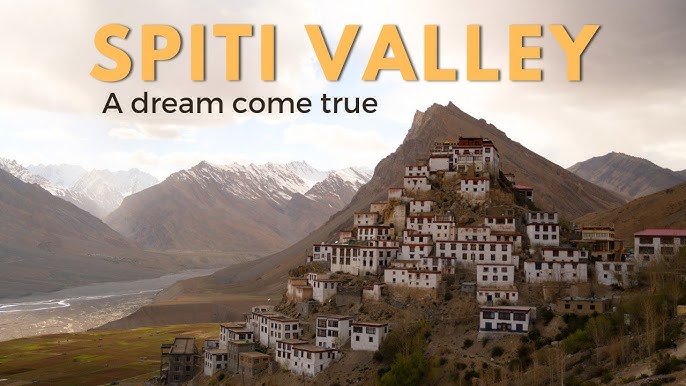Whispers of the Wind: The Spiritual Ascent from Chopta Tungnath Trek from Delhi
Published on June 25, 2025
Chopta tungnath trek from delhi, When the chaos of city life begins to echo too loud, the mountains call with a softer voice — a whisper carried by the Himalayan wind. That whisper leads you to Chopta, a land where serenity, spirituality, and snow-draped trails invite you into an experience unlike any other. Among Uttarakhand’s most soulful treks, the Chopta Tungnath trek from Delhi is not just a journey through nature, but a pilgrimage through peace.
The Essence of the Chopta Tungnath Trek
Starting from the quiet hamlet of Chopta, this trek winds through forests of oak and rhododendron, opening up to the majestic Tungnath Temple, the highest Shiva temple in the world. But the journey doesn’t end there. A further climb brings you to the Chandrashila summit trek, offering panoramic views of Nanda Devi, Trishul, and Chaukhamba peaks.
It’s a journey made for adventurers, couples, spiritual seekers, and nature lovers alike.

Journey at a Glance: Your Day-by-Day Itinerary
Day 0: Delhi to Rishikesh to Sari Village
- Departure: Start your journey from Botanical Garden Metro Station at 10:00 PM.
- Overnight Journey: Travel overnight towards Sari Village via Rishikesh.
- Stop at Devprayag: Witness the mesmerizing confluence of the Bhagirathi and Alaknanda rivers along the way.
Day 1: Sari Village to Deoriatal
- Arrival at Sari Village: Check into your homestay and take some time to freshen up.
- Trek to Deoriatal: Begin your trek to Deoriatal (2.5 km, approximately 1.5–2 hours).
- Enjoy Deoriatal: Soak in the serene beauty of the lake and the surrounding landscapes.
- Return to Sari Village: Head back to Sari Village and enjoy a peaceful evening.
Day 2: Sari Village to Tungnath & Chandrashila
- Breakfast: Start your day with a hearty breakfast at your homestay.
- Drive to Chopta: A scenic drive of about 1 hour from Sari Village.
- Trek to Tungnath Temple: Embark on a 3.5 km trek to the sacred Tungnath Temple.
- Summit Chandrashila: Extend your trek by 1.5 km to reach the breathtaking Chandrashila summit.
- Return to Chopta/Sari: After the trek, return to Chopta or Sari for an overnight stay at the campsite.
Day 3: Chopta to Delhi
- Breakfast: Enjoy an early breakfast at your campsite in Chopta.
- Departure: Begin your journey back to Delhi in the early morning.
- Visit Dhari Devi Temple: Stop by the revered Dhari Devi Temple en route.
- Arrival in Delhi: A long drive of approximately 10–12 hours marks the end of your adventure.
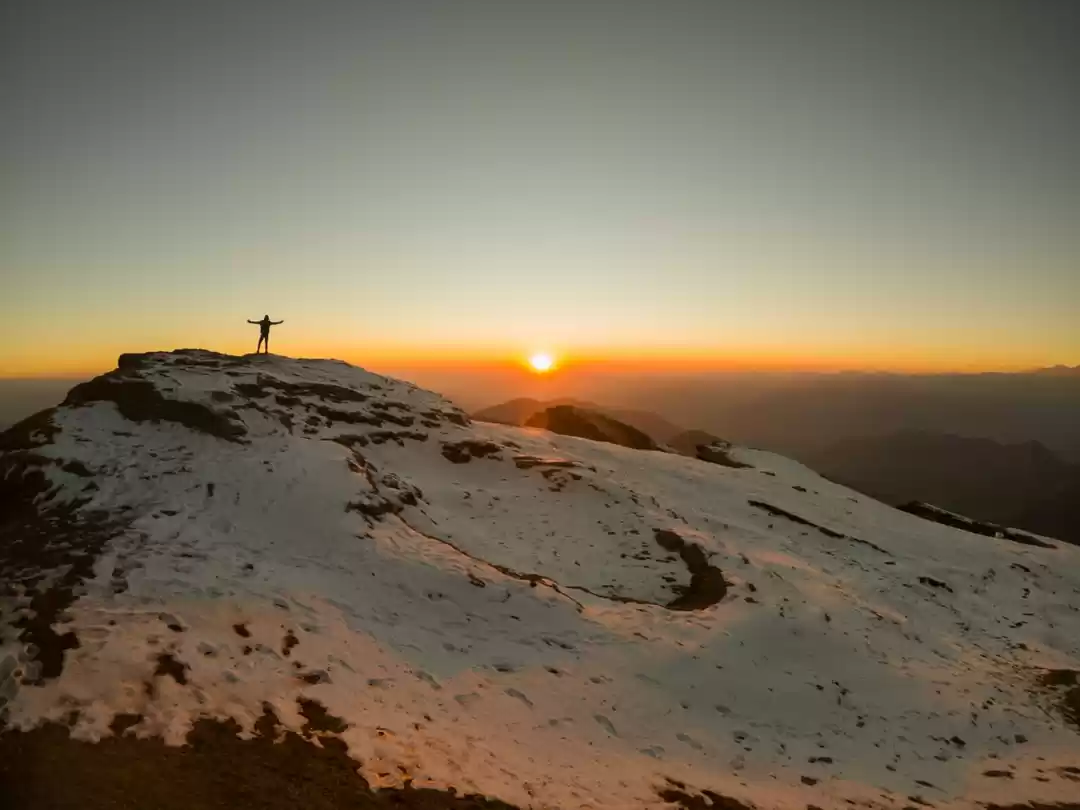
Inclusions
-
Transportation:
Delhi to Chopta and return via tempo traveler/AC vehicle (as per group size) -
Accommodation:
Stay in Swiss tents or guesthouses on a twin/triple sharing basis -
Meals:
Nutritious veg meals – generally 2 breakfasts and 2 dinners (or as per itinerary) -
Trek Guide & Support Staff:
Certified local trek guide with experience in high-altitude trekking -
Trekking Essentials:
Basic first-aid kit, permits, forest entry fees -
Bonfire (Subject to Weather):
One evening group bonfire session with music -
Safety & Hygiene:
Sanitized accommodation, masks, and emergency assistance available -
Sightseeing:
Visit to Tungnath Temple, Chandrashila Summit, and nearby viewpoints
Exclusions
-
Personal Expenses:
Snacks, mineral water, cold drinks, and meals not mentioned in the itinerary -
Trekking Gear Rental:
Woolen wear, trekking shoes, walking sticks, etc. (available on request/rental) -
Travel Insurance & Medical Costs:
Any personal medical expense, accident insurance, or emergency evacuation -
Early Return or Stay Extension:
Extra hotel stays, transport, or meals due to delay or early departure -
Entry Fees Not Mentioned:
Camera fees, video permits, or temple donations -
Porters or Mules:
Charges for personal luggage carriage (if needed) -
Air/Train Fare to Delhi:
The package starts and ends in Delhi – reaching point not included
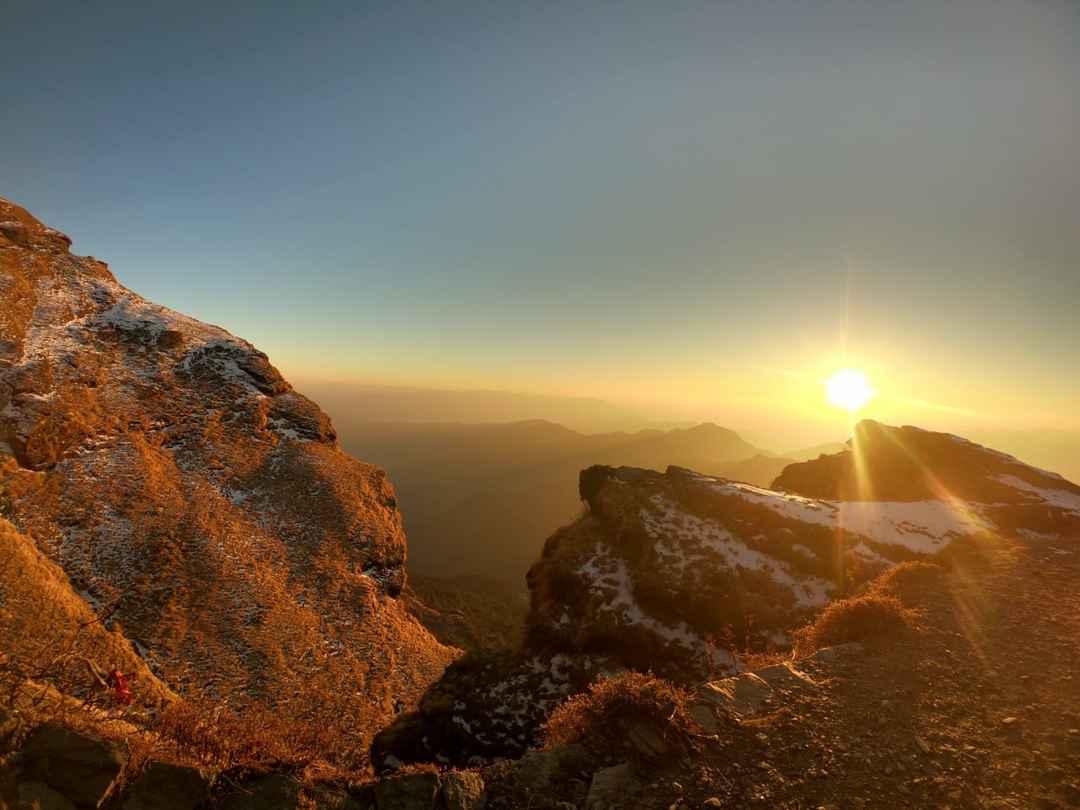
Chopta Tour Package from Delhi: How It Begins
Most Chopta tour packages from Delhi begin with an overnight drive, covering approximately 450 km. Whether you're opting for a budget group tour or a Chopta tour package for couples, the scenic ride is filled with river valleys, charming villages, and glimpses of the Garhwal Himalayas.
Popular Starting Points Include:
-
Delhi (Private vehicle or tempo traveller)
-
Haridwar or Rishikesh
-
Dehradun (especially for Chopta Tungnath trek packages)
Tungnath Temple Trek: Where Divinity Meets Elevation
-
Altitude: 3,680 meters
-
Tungnath trek distance: ~3.5 km (from Chopta base)
-
Trek time: 3–4 hours (one way)
The Tungnath temple trek isn’t just about altitude. It’s about attitude — the steady ascent into stillness. Every step reveals pristine forests, birdsong, and fluttering prayer flags. Tungnath is the third of the Panch Kedar temples, making it a sacred stop for pilgrims and wanderers alike.
Looking for a hassle-free plan? Go for a Tungnath tour package from Delhi, Rishikesh, Haridwar, or Dehradun.
Chandrashila Summit Trek: The Crown of the Himalayas
-
Additional Distance: 1.5 km from Tungnath
-
Altitude: ~4,000 meters
-
Trek Grade: Moderate to steep
The Chandrashila trek is the final ascent — the moment when all the effort pays off. The chandrashila summit trek offers a 270° view of Himalayan peaks and one of the most magical sunrise experiences in North India. In winter, this section is often snow-covered, adding thrill to the climb.
This leg is usually part of a Chopta Chandrashila trek package, often customized from Delhi, Haridwar, or Rishikesh.
Where to Stay: Accommodations in Chopta
Whether you want to sleep under the stars in a tent or cozy up in a cottage, Chopta has it all. Your Chopta tour can include:
-
Swiss tents and alpine campsites
-
Budget guesthouses in Chopta or Duggalbitta
-
Wooden cottages with valley views
Many Chopta tour packages bundle accommodation with meals, bonfires, and guided treks.
Chopta Tour Packages: What to Expect
Popular Inclusions:
-
Travel from Delhi/Haridwar/Rishikesh
-
Accommodation (camping/hotel)
-
Meals (usually 4–5 per package)
-
Guide and permits
-
Trekking gear (optional in winter)
Add-ons for Couples:
-
Private tents or rooms
-
Special arrangements for sunrise/sunset views
-
Candlelight dinner options
Chopta Tour Package Price Range:
-
Budget Group Packages: ₹3,500–₹6,500
-
Mid-Range Couple Packages: ₹6,000–₹10,000
-
Premium Private Tours: ₹12,000–₹18,000 (with luxury stay and add-ons)
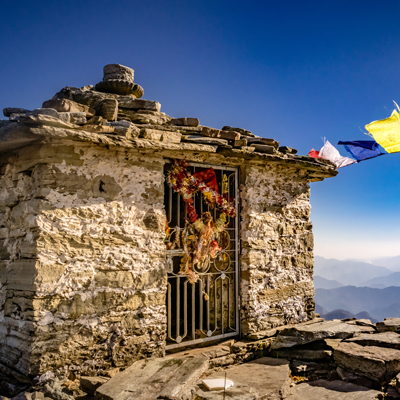
Skies Over the Sacred Peaks: Weather Guide to Chopta Tungnath
Nestled high in the Garhwal Himalayas, Chopta Tungnath offers more than just mystical trails and divine serenity — it offers a weather story that shifts with the seasons. Whether you're trekking to Tungnath Temple, chasing sunrise at Chandrashila Summit, or simply enjoying the alpine air, understanding Chopta’s climate helps you plan the perfect journey.
Spring (March to April): Rhododendrons & Rising Warmth
As winter snow begins to melt, Chopta awakens in a burst of color.
-
Temperature: 5°C to 15°C
-
Weather: Crisp mornings, sunny days, chilly nights
-
Highlight: Buransh (rhododendron) flowers bloom across the trail
Best For: Easy treks, nature photography, and peaceful escapes
Summer (May to June): Clear Skies & Comfortable Treks
Summer transforms Chopta into a cool mountain escape from the city heat.
-
Temperature: 10°C to 22°C
-
Weather: Bright, dry, with occasional clouds
-
Views: Perfect for panoramic Himalayan vistas
Best For: Family trips, first-time trekkers, and scenic stays
Monsoon (July to September): Green, Wet & Whispering
Monsoon brings mist, lush meadows, and quiet solitude — but with challenges.
-
Temperature: 10°C to 18°C
-
Weather: Rainfall, slippery trails, low visibility
-
Caution: Landslides and leeches possible in forested areas
Best For: Nature lovers and budget travelers seeking solitude
Note: Some treks may be restricted during heavy rains
Autumn (October to November): Golden Trails & Crystal Skies
Post-monsoon Chopta is a dream for trekkers and photographers.
-
Temperature: 5°C to 14°C
-
Weather: Dry, calm, and extremely clear
-
Experience: Golden-hued forests and sharp mountain views
Best For: Chandrashila treks, sunrise seekers, and couples
Winter (December to February): Snowy Silence & Sacred Stillness
Winter wraps Chopta in pure white snow and peaceful silence.
-
Temperature: -5°C to 8°C
-
Weather: Heavy snowfall (especially in Jan–Feb)
-
Trail Update: Tungnath Temple is often buried in snow
Best For: Snow trekkers, photographers, and offbeat explorers
Caution: Only attempt with guides and proper gear

Staying Close to the Sky: Accommodations in Chopta Tungnath
Imagine waking up to snow-kissed meadows, the chirping of Himalayan birds, and a view of towering peaks straight from your window or tent flap. That’s the charm of staying in Chopta, the starting point of the iconic Chopta Tungnath trek. Whether you're a backpacker, a couple seeking serenity, or a trekker en route to Chandrashila summit, Chopta offers a stay for every soul and every budget.
Types of Accommodations in Chopta Tungnath Region
1. Campsites & Swiss Tents (For the Nature-Lover)
Perfect for adventure seekers and groups, campsites in Chopta and Duggalbitta offer luxury tents, alpine setups, and bonfires under starry skies.
Features:
-
Cozy beds and warm blankets
-
Shared or attached washrooms
-
Bonfire and dinner-included packages
-
Ideal for budget-friendly Chopta tour packages
2. Wooden Cottages & Eco-Stays (For Peace Seekers & Couples)
Experience the forest in full comfort. These cottages are ideal for couples booking Chopta tour packages for couples or those seeking a quiet, aesthetic escape.
Features:
-
Private balcony views of the valley
-
Attached bathrooms, geysers (hot water)
-
Solar-heated rooms in some eco-stays
-
Often included in premium Chopta tungnath trek packages
3. Guesthouses & Budget Hotels (For Practical Travelers)
Located in Chopta, Baniyakund, and Ukhimath, these are perfect for solo travelers or those looking for comfort at minimal cost.
Features:
-
Clean rooms with basic amenities
-
Homemade food available
-
Warm hospitality by locals
-
Often included in budget Chopta tour package from Delhi or Haridwar
4. Homestays (For Local Immersion)
Live like a local! Homestays offer the most authentic Garhwali hospitality and allow you to learn about the region’s culture and cuisine.
Features:
-
Family-run setups with personal care
-
Organic food, local delicacies
-
Great for offbeat explorers and small groups
Popular Areas to Stay Near Chopta Tungnath
Chopta Village (Base for Tungnath Temple Trek)
-
Closest to the Tungnath trek start point
-
Limited stays, fills up fast in peak season
-
Great for early morning trek starts
Duggalbitta
-
Peaceful, forested area 7 km before Chopta
-
Known for quality camps and birdwatching
-
Preferred in Chopta Chandrashila trek package
Baniyakund
-
Just 3–4 km from Chopta
-
Scenic, peaceful, and budget-friendly
-
More stay options and open even in winter
Ukhimath
-
30 km away; base in case Chopta roads are closed in winter
-
Good hotels, homestays, and local food
-
Start point for Tungnath trek package from Haridwar or Rishikesh
Accommodation Tips Before You Book
-
Book early in peak seasons (May–June, Sept–Nov)
-
Carry cash – ATMs and networks are rare beyond Ukhimath
-
Layered clothing – rooms get cold even inside
-
Request hot water in advance in budget properties
-
Ask about snowfall conditions if visiting Dec–Feb
Experience More Than Just a Stay
Many Chopta tour packages include unique experiences like:
-
Early morning sunrise treks
-
Bonfire evenings with folk stories
-
Meditation spots amidst the forest
-
Stargazing in zero-light-pollution skies
-
Hot pahadi meals and ginger tea in the cold
Whether you're booking a Tungnath tour package from Delhi, a Chopta chandrashila trek from Delhi, or a Tungnath trek package from Rishikesh, your stay completes the story.

What to Pack and What to Skip for the Chopta Tungnath Trek
Planning your trek to Chopta Tungnath and Chandrashila? Great! But packing right is key to enjoying the journey stress-free. Here’s your go-to guide for essentials you should carry and things better left behind.
What to Pack: Must-Haves for the Trek
Clothing (Layer Up!)
-
Thermal inners (especially for Oct–March)
-
Trek pants (quick-dry, lightweight)
-
Full-sleeve t-shirts (for sun & insect protection)
-
Fleece or down jacket (essential for mornings & nights)
-
Waterproof windcheater / rain poncho (if visiting during monsoon)
-
Woolen cap, gloves & socks (for winter treks)
Footwear
-
Trekking shoes with good grip (essential for snow/mud trails)
-
Light slippers (for evenings at camp/homestay)
Gear & Accessories
-
Backpack (30–40L) with rain cover
-
Headlamp or torch (power cuts are common)
-
Reusable water bottle or hydration bag
-
Sunglasses (UV protection)
-
Sunscreen SPF 40+, lip balm, moisturizer
-
Power bank (limited charging options)
-
Trekking pole (helpful on steep trails)
Toiletries & First Aid
-
Toothbrush, biodegradable soap, toilet paper
-
Personal medication (if any)
-
Basic first-aid: band-aids, painkiller, crepe bandage, antiseptic, anti-altitude sickness tab (if needed)
Essentials
-
Valid ID proof
-
Some cash (ATMs are rare beyond Ukhimath)
-
Copy of your travel insurance (if applicable)
What to Skip: Travel Light & Smart
Overpacking Clothes
-
No need for jeans or heavy jackets if you’re layering smart
-
Don’t carry too many changes of clothes — you won’t need them
Fancy Footwear
-
Heels, flats, or sneakers without grip are useless here
Large Toiletry Kits
-
Avoid bulky shampoo bottles, hair dryers, or cosmetics — keep it minimal and natural
Electronics
-
Laptops, tablets, or heavy camera kits are unnecessary unless you’re a content creator
Snacks in Bulk
-
Carry light munchies like trail mix or energy bars, but avoid big packs of chips, etc. — they add waste and weight
Loud Speakers or Party Gear
-
The region is peaceful and sacred — music is best kept to earphones or soft acoustic gatherings

Tungnath: Where Legends Rest in Stone and Sky
High in the Garhwal Himalayas, cradled by whispering winds and draped in clouds, stands a temple so ancient and sacred, even time bows at its threshold. This is Tungnath, the highest Shiva temple in the world — a spiritual marvel that blends myth, devotion, and Himalayan serenity in one soul-stirring journey.
The Legend of Panch Kedar and Lord Shiva’s Retreat
The story of Tungnath begins in the aftermath of the Kurukshetra war, when the Pandavas, burdened by guilt for the bloodshed, sought Lord Shiva’s forgiveness. But the Lord, unwilling to meet them directly, disguised himself as a bull and fled to the Himalayas.
The Pandavas pursued him, and when Bhima spotted the bull in Guptkashi, he tried to catch it. In a dramatic twist of divine will, Shiva disappeared into the earth — only to reappear in five different places, each representing a part of his body. These became the sacred Panch Kedar temples:
-
Kedarnath – the hump
-
Tungnath – the arms
-
Rudranath – the face
-
Madhyamaheshwar – the navel
-
Kalpeshwar – the hair
Tungnath, meaning "Lord of the Peaks", is believed to be where the arms of Lord Shiva emerged, sanctifying this spot with eternal divinity.
Tungnath Through the Ages: Built by Faith, Surviving by Grace
Believed to be over 1,000 years old, the stone structure of Tungnath stands at a staggering 3,680 meters (12,073 feet). Though there's no precise record of its construction, legends credit the Pandavas themselves for building the shrine as an act of redemption.
What makes it extraordinary is not just its elevation, but its simplicity and strength — the temple’s architecture is a humble reflection of devotion, designed to survive centuries of harsh Himalayan weather.
Even today, priests from Ukhimath (a nearby town) perform rituals here during the summer months. In winter, when snow buries the region, the idol is moved to Ukhimath for worship — continuing an unbroken spiritual tradition.
Where Devotion Meets the Sky
Unlike many temples accessed by road, Tungnath can only be reached by foot — a 3.5 km trek from Chopta, winding through alpine meadows and pine forests. The journey is part of the penance. Every step toward the shrine is soaked in silence, mystery, and peace.
For centuries, pilgrims, sadhus, and seekers have walked this path not just for darshan, but for inner stillness. It's not just a temple. It's a spiritual threshold — a place where the veil between the mortal and divine feels almost transparent.
Tungnath in Today’s World: Where Trekkers and Believers Meet
In recent years, the Chopta Tungnath trek has drawn more than just pilgrims. Adventure seekers, photographers, couples, and trekkers now walk the ancient trail to witness not just the temple, but also the Chandrashila Summit, just 1.5 km further up.
While modern Chopta tour packages from Delhi, Haridwar, Rishikesh, and Dehradun make the journey accessible, the essence of Tungnath remains unchanged — mystical, powerful, and profoundly moving.
Why Tungnath Still Matters
-
Spiritual Powerhouse: One of the holiest Shiva temples, and part of the sacred Panch Kedar
-
Historical Enigma: Built thousands of years ago, without mortar, yet still standing
-
Cultural Heritage: Rituals unchanged over generations, upheld by local priests
-
Trekking Gem: A must-visit on the Chopta Chandrashila trek
-
Symbol of Simplicity: No gold, no grandeur — just pure spiritual energy

Final Word: Where History Touches Heaven
Tungnath isn't just a place to visit — it's a story to feel, a legend to walk, and a silence to experience. It's where the arms of the divine reach out to bless, to forgive, and to guide.
So when you take the Chopta Tungnath trek, you’re not just walking a path — you’re retracing steps of ancient faith, across a thousand years of devotion carved in stone, shadowed by peaks, and carried by the wind.
Frequently Asked Questions:
-
What is the best time to visit Chopta Tungnath?
March to June and September to November are the best months for pleasant weather and clear views. -
How difficult is the Chopta Tungnath trek?
It’s a short to moderate trek, ideal for beginners with basic fitness. -
How long is the trek to Tungnath Temple?
The trek is around 3.5 km from Chopta and takes 2–3 hours one way. -
Can Chandrashila Summit be covered on the same trek?
Yes, Chandrashila is 1.5 km beyond Tungnath and can be done in the same day. -
Is the trek open during winter?
Yes, but it’s snow-covered and more challenging. Tungnath Temple remains closed in winter. -
Are there stay options in Chopta?
Yes, camps, guesthouses, cottages, and homestays are available in Chopta, Duggalbitta, and Baniyakund. -
How to reach Chopta from Delhi?
You can travel by bus/train to Haridwar or Rishikesh, then by taxi or shared cab to Chopta. Some packages include direct travel. -
Is mobile network available in Chopta?
Limited. BSNL works best; other networks may be weak or unavailable. -
What is the temperature like in Chopta?
It ranges from 10°C to 22°C in summer and drops to -5°C to 8°C in winter. -
Is it suitable for couples or families?
Absolutely! Many Chopta tour packages for couples and families offer comfortable stays and safe trekking routes.
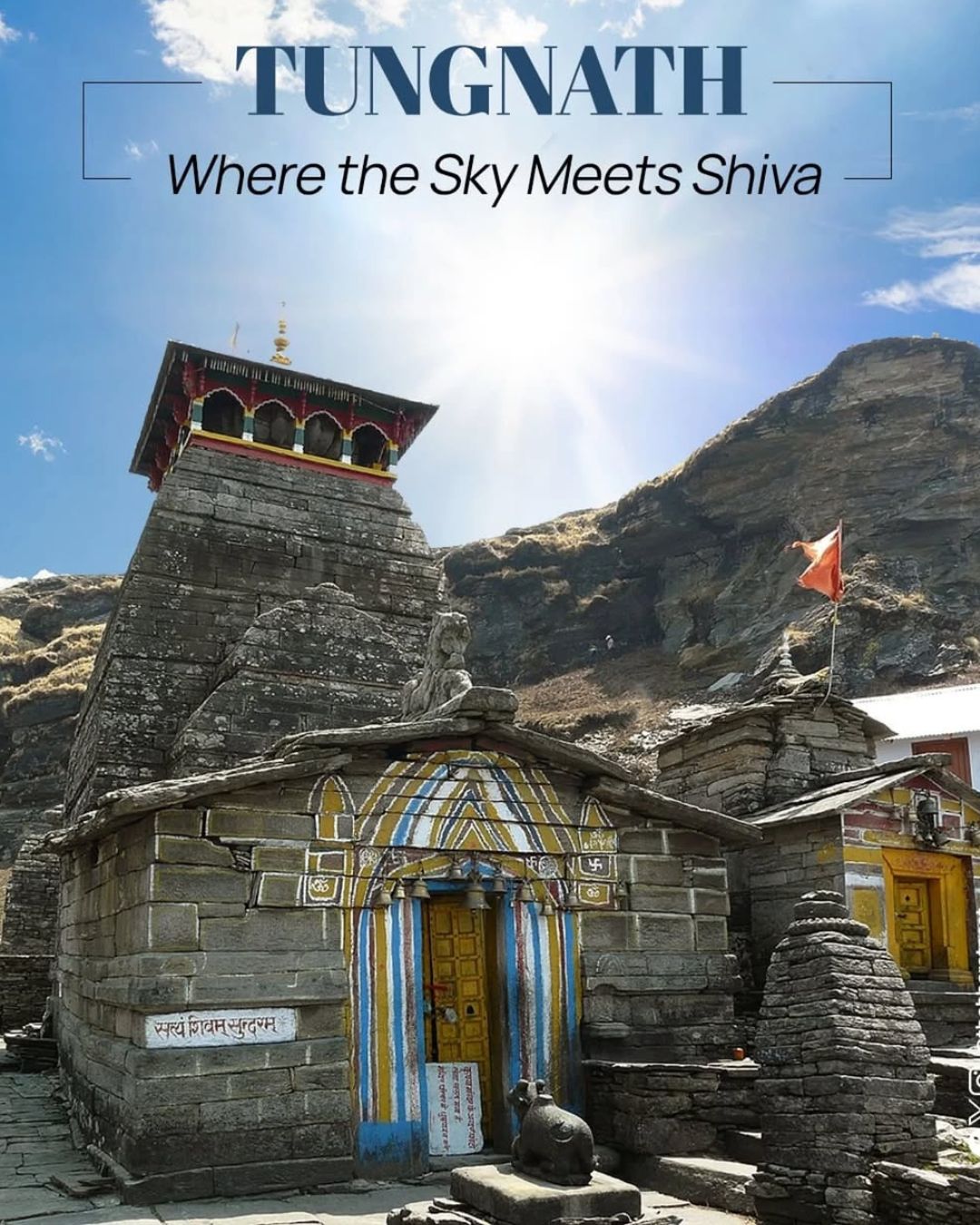
.jpg)
.jpg)
